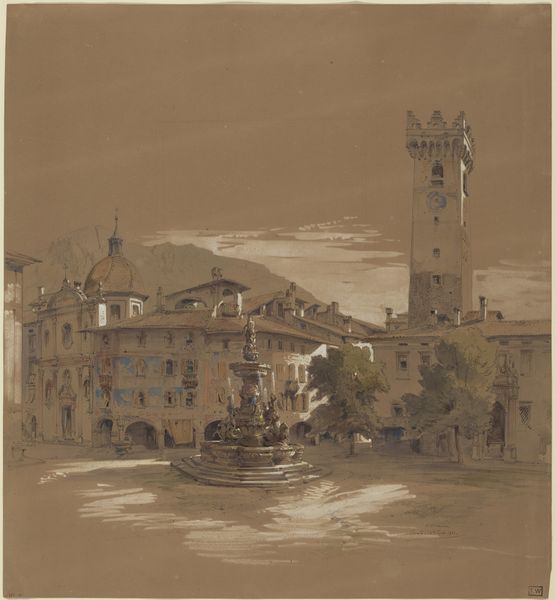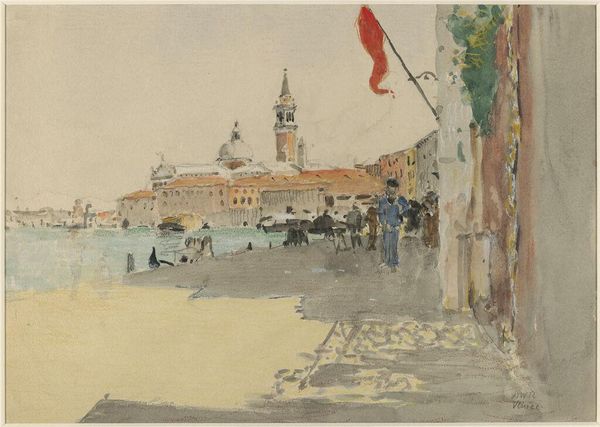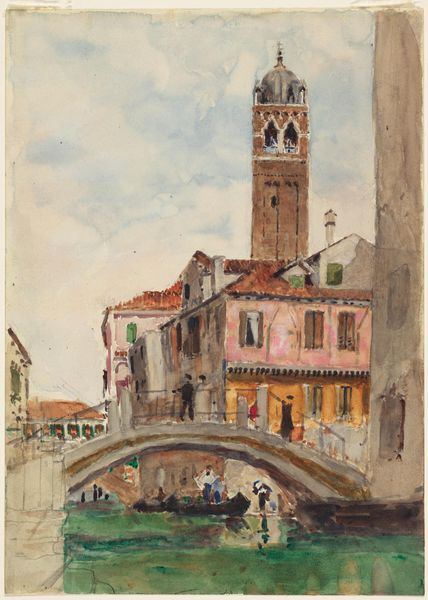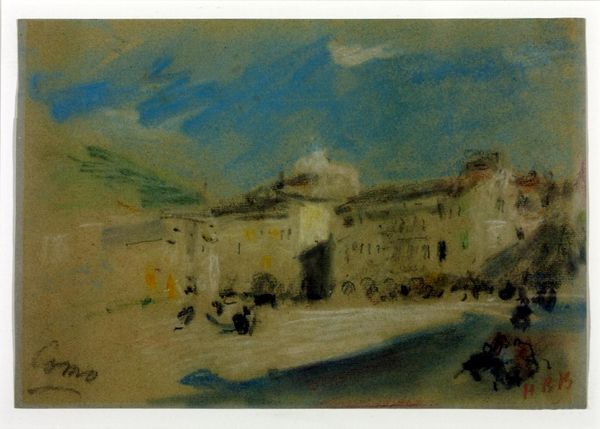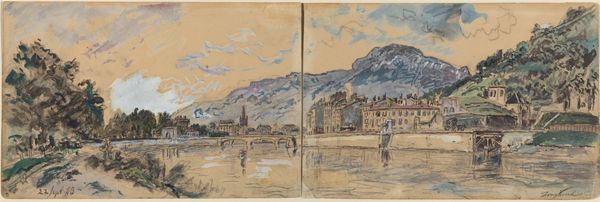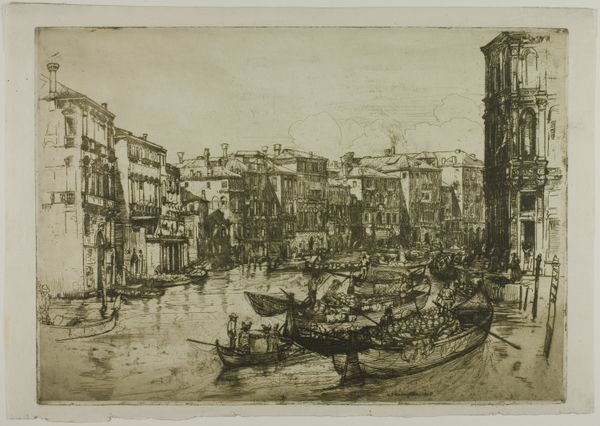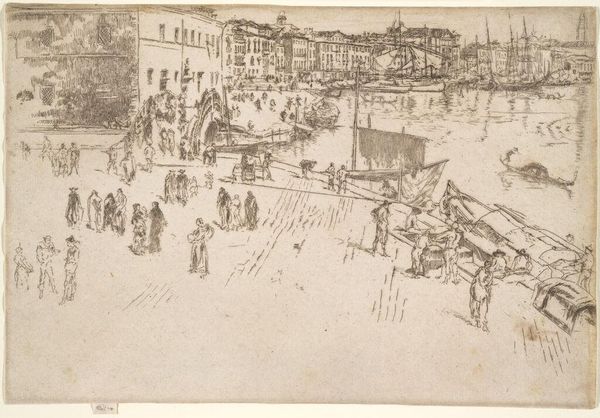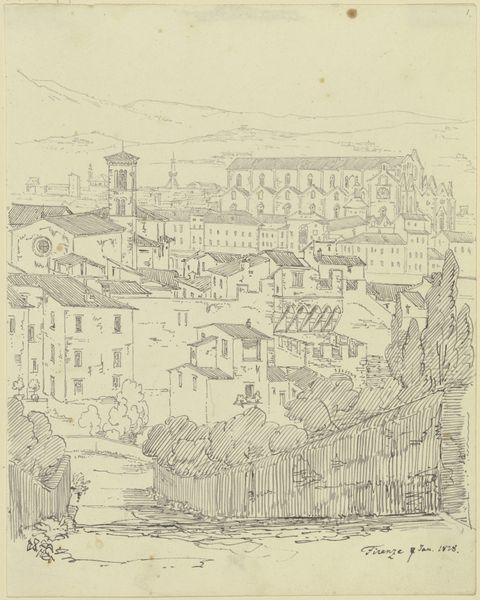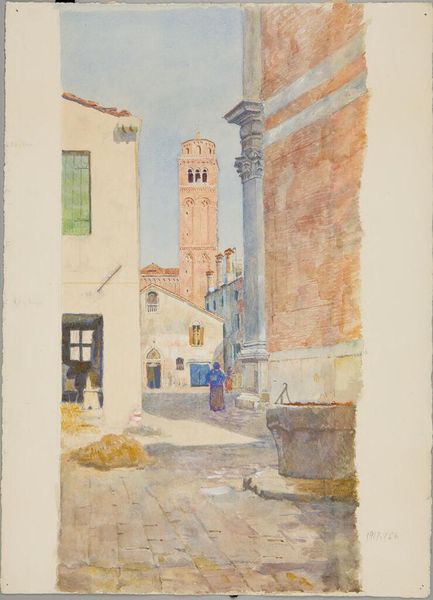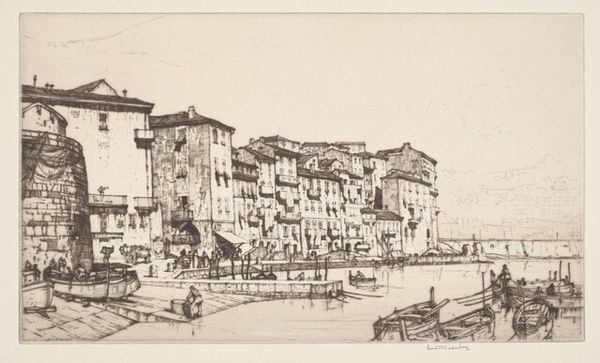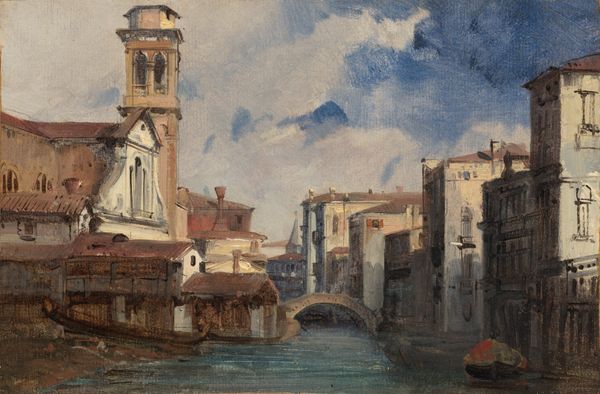
Dimensions: height 148 mm, width 225 mm
Copyright: Rijks Museum: Open Domain
Curator: Here we have a watercolour painting entitled 'Gezicht op S. Anastasia te Verona, over de Adige,' placing it as a view of St. Anastasia in Verona across the Adige river. While its creation date is listed as 1829-1900, it is attributed to John Ruskin. Editor: The overall impression is a city dissolving in light and water. The palette is subdued, almost monochromatic, focusing on subtle shifts in tone. What’s striking is how the built environment and the natural environment blend—buildings emerging directly from the river almost as if extensions of the earth itself. Curator: Ruskin’s choice of watercolour and the apparent looseness of the technique might speak to a desire to capture a specific, fleeting moment. Watercolour, traditionally, held a lower status, and Ruskin’s embracing of it hints at the evolving hierarchy within art institutions. Editor: Absolutely, the medium is key here. Watercolors allow for immediacy, a certain transparency. Look how the light filters through, especially in the treatment of the river—it’s not just depicting water; it’s about rendering light as it interacts with the surface. And the quick, confident strokes suggest it could have been painted en plein air. This likely speaks to Ruskin's focus on labor and process, not just the end result. Curator: This viewpoint, focusing on the Adige, could suggest a romantic fascination with the picturesque and the sublime. Ruskin, often concerned with the moral qualities of art, might have selected this angle to convey a specific mood of peaceful contemplation. Also, the depiction of architecture underscores Ruskin's writings on Venice and his appreciation of the craftsmanship from the region. Editor: Yes, this is far from just documentation of place. Even though the architecture is detailed and specific, what endures is that play of light across different surfaces, the city, water and the sky. You begin to see that through material interactions this wasn’t a landscape that simply ‘existed’, but one formed by perception. Curator: It certainly makes you think about Ruskin's position and what drove his particular interests. Editor: Precisely. It's remarkable to contemplate these connections, the intersection of method, place and a subjective way of viewing the world through a distinct making process.
Comments
No comments
Be the first to comment and join the conversation on the ultimate creative platform.
